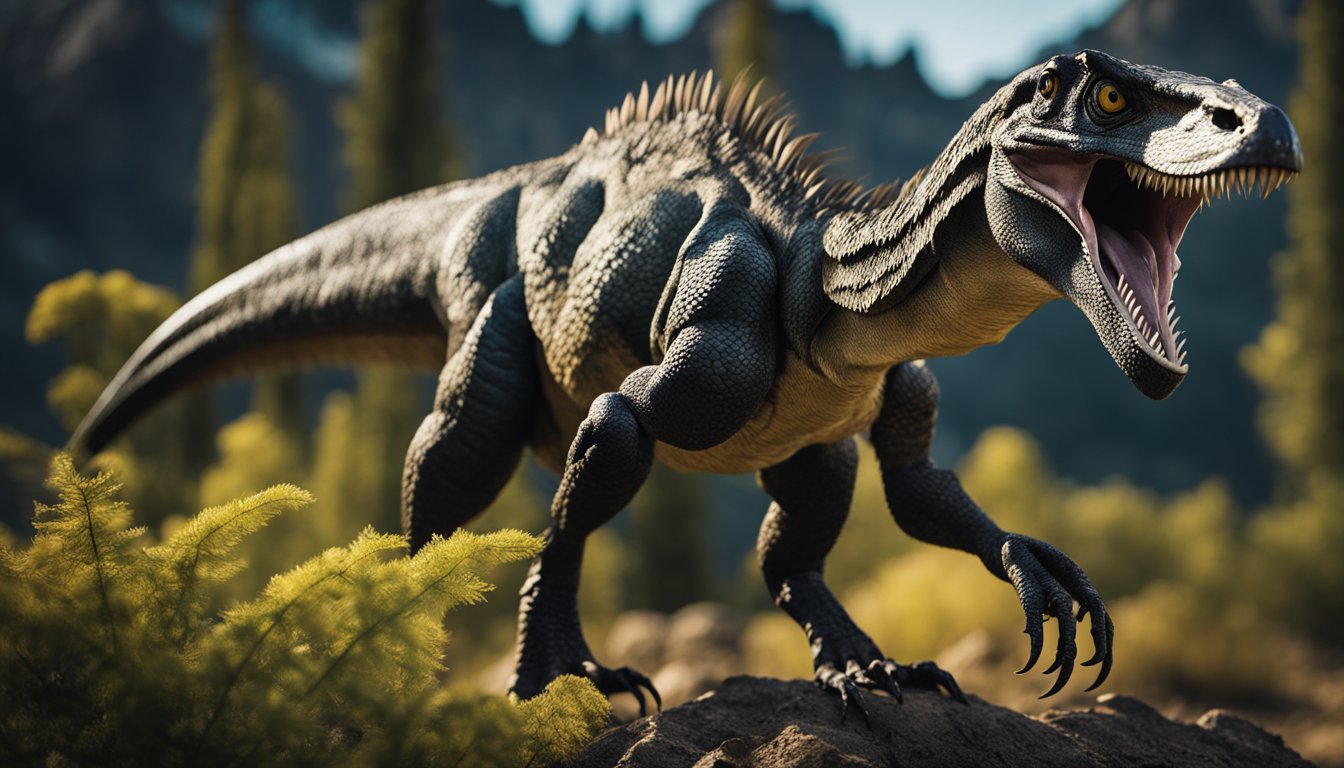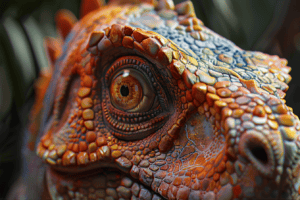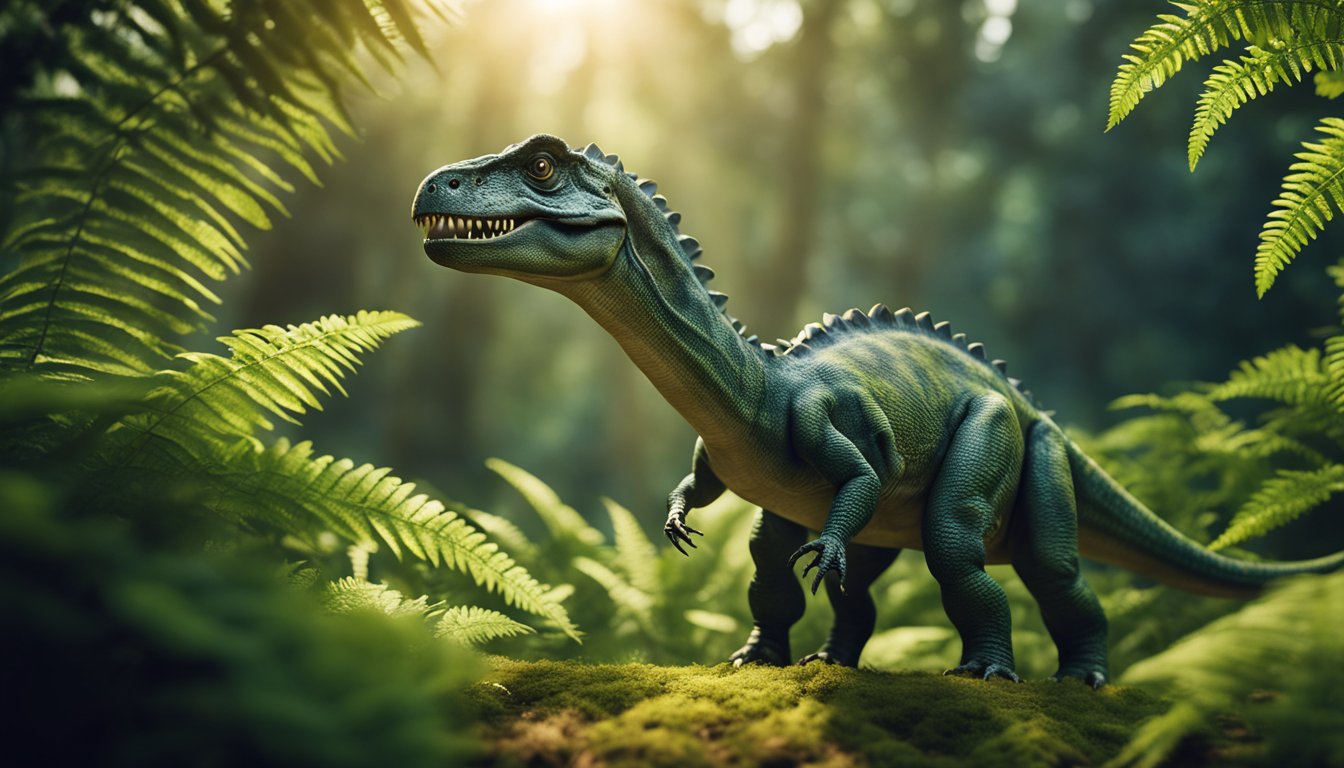Utahraptor is a dinosaur species that lived millions of years ago, but it has left a lasting impact on popular culture.
In particular, it is the dinosaur that inspired the iconic Velociraptors in the Jurassic Park film franchise.
Despite the name, the raptors in the movie are not actually Velociraptors, but rather a larger and more fearsome cousin – the Utahraptor.

The discovery of Utahraptor in the early 1990s caused a sensation in the scientific community.
It was one of the largest raptors ever found, measuring up to 20 feet long and weighing up to a ton.
Its sharp claws and teeth made it a formidable predator, and it likely hunted in packs like modern-day wolves.
Its size and ferocity made it the perfect inspiration for the Jurassic Park filmmakers, who wanted to create a dinosaur that would strike fear into the hearts of moviegoers.
Discovering the Utahraptor

Utahraptor is a dinosaur that lived around 125 million years ago in what is now Utah.
It was a fierce predator, and its discovery has helped paleontologists understand more about the evolution of dinosaurs.
In this section, we will explore the fascinating story of how the Utahraptor was discovered.
Fossil Finds and Paleontologist Pioneers
The story of the Utahraptor begins in the early 1970s when paleontologist Jim Jensen discovered a fossilized claw in the Dalton Wells Quarry in Grand County, Utah.
This discovery led to the excavation of the site, which revealed a treasure trove of dinosaur fossils, including those of the Utahraptor.
Jensen was not alone in his quest to uncover dinosaur fossils.
He was joined by other paleontologists, including John Ostrom, who was instrumental in redefining the way scientists thought about dinosaurs.
Ostrom’s work on the Deinonychus, a relative of the Utahraptor, showed that dinosaurs were not just sluggish reptiles but were instead active and intelligent creatures.
Naming the Beast: Utahraptor Ostrommaysi
The Utahraptor was named by paleontologist Chris Mays in 1993, and it was named after John Ostrom and Jim Jensen.
The scientific name for the Utahraptor is Utahraptor ostrommaysi.
The discovery of the Utahraptor was a significant moment in the history of paleontology.
It showed that dinosaurs were not just lumbering beasts but were instead agile and intelligent predators.
The discovery of the Utahraptor also helped scientists understand more about the evolution of dinosaurs and their place in the natural world.
Fun Fact: The Utahraptor was not the only dinosaur discovered in the Dalton Wells Quarry.
Other dinosaur fossils found at the site include those of the Gastonia, a heavily armored dinosaur, and the Cedarosaurus, a long-necked sauropod.
In conclusion, the discovery of the Utahraptor was a significant moment in the history of paleontology.
It helped scientists understand more about the evolution of dinosaurs and their place in the natural world.
The Dalton Wells Quarry in Grand County, Utah, remains an important site for paleontologists, and it continues to yield new discoveries to this day.
The World of Utahraptor
Cretaceous Period: A Prehistoric Stage
Utahraptor lived during the Early Cretaceous period, a prehistoric era that lasted from about 145 million to 100 million years ago.
During this time, the supercontinent Pangaea began to break up into smaller landmasses, and the climate was warmer and wetter than it is today.
The Early Cretaceous was also a time when many different types of dinosaurs roamed the Earth, including the armored Gastonia, the herbivorous Iguanodon, and of course, the ferocious Utahraptor.
Utahraptor’s Habitat and Neighbors
Utahraptor lived in what is now Utah State, in an area known as the Cedar Mountain Formation.
This region was once home to a diverse array of dinosaurs, including iguanodonts, sauropods, and other theropods.
Utahraptor was one of the largest predators in this ecosystem, and it likely hunted in packs, using its sharp claws and teeth to take down its prey.
Despite its fearsome reputation, Utahraptor was not the only predator in its habitat.
Other theropods, such as the smaller Deinonychus, also lived in the region and likely competed with Utahraptor for food and territory.
Additionally, the Cedar Mountain Formation was home to a variety of herbivorous dinosaurs, including iguanodonts and sauropods, which likely provided a steady food source for Utahraptor and other predators.
Overall, the world of Utahraptor was a complex and diverse ecosystem, filled with a variety of dinosaurs and other prehistoric creatures.
Despite living millions of years ago, the world of Utahraptor provides us with a fascinating glimpse into the natural history of our planet, and continues to inspire scientists and dinosaur enthusiasts alike.
The Anatomy of a Predator

Physical Features and Hunting Tools
Utahraptor was a fierce predator that lived during the Early Cretaceous period, approximately 125 million years ago.
It was a member of the Dromaeosaur family, which also includes other famous species like Velociraptor.
Utahraptor was much larger than Velociraptor, measuring up to 23 feet (7 meters) in length and weighing up to 1,500 pounds (680 kilograms).
One of the most notable features of Utahraptor was its sickle-shaped claw on its hind feet.
This claw was up to 9.5 inches (24 centimeters) long and was used to slash and disembowel its prey.
Utahraptor also had serrated teeth, which it used to tear flesh and crush bones.
Utahraptor was also covered in feathers, which helped to regulate its body temperature and provide insulation.
The feathers may have also helped to camouflage the dinosaur while hunting.
Diet and Hunting Strategies
Utahraptor was a carnivore, meaning that it only ate meat. It was a pack hunter, which means that it hunted in groups.
This allowed Utahraptor to take down larger prey than it could on its own.
Utahraptor likely hunted herbivorous dinosaurs like Iguanodon and Tenontosaurus. It may have also hunted smaller predators like other Dromaeosaurs.
When hunting, Utahraptor would use its sickle-shaped claw to slash at its prey, while its packmates would attack from other angles.
Once the prey was immobilized, Utahraptor would use its serrated teeth to tear flesh and crush bones.
Fun fact: Utahraptor is the largest known Dromaeosaur and is also the state dinosaur of Utah.
Utahraptor in Popular Culture

From Paleontological Studies to the Silver Screen
Utahraptor, the largest of all raptor dinosaurs, has become a popular subject of scientific research and has also gained fame in popular culture.
The dinosaur was first discovered in 1991 by Jim Kirkland, a paleontologist from Utah, and was named after the state.
Utahraptor was a fierce predator that lived during the Early Cretaceous period, approximately 125 million years ago.
Utahraptor’s popularity soared when it inspired the creation of the famous Velociraptor in the 1993 blockbuster movie, Jurassic Park.
Steven Spielberg, the director of the film, was fascinated by the idea of a pack of intelligent, fast-moving raptors hunting down their prey.
However, the Velociraptor portrayed in the movie was actually based on Deinonychus, another raptor dinosaur that lived during the same period as Utahraptor.
Despite this misconception, Utahraptor has remained a favorite among dinosaur enthusiasts and has been featured in various media, including books, video games, and documentaries.
In fact, paleontologist Robert Bakker wrote a novel called Raptor Red, which tells the story of a female Utahraptor and her struggles to survive in the harsh environment of the Early Cretaceous.
Misconceptions and Realities
Utahraptor has been the subject of many misconceptions in popular culture.
For example, many people believe that Utahraptor was as small as the Velociraptor portrayed in Jurassic Park.
However, Utahraptor was actually much larger, measuring up to 23 feet long and weighing around 1,000 pounds.
It was also covered in feathers, which were not shown in the movie due to the lack of scientific evidence at the time.
Another misconception is that Utahraptor was a solitary hunter.
In reality, Utahraptor most likely hunted in packs, just like the Velociraptor in Jurassic Park.
This theory is supported by the discovery of multiple Utahraptor fossils in close proximity to each other, as well as the presence of sharp claws on their feet that were likely used for gripping and tearing apart prey.
Despite these misconceptions, Utahraptor remains one of the most fascinating and awe-inspiring dinosaurs to have ever lived.
Its size, speed, and intelligence make it a true marvel of nature, and a testament to the incredible diversity of life that existed on our planet millions of years ago.
Frequently Asked Questions

How big was the Utahraptor compared to the Velociraptor portrayed in Jurassic Park?
The Utahraptor was much larger than the Velociraptor portrayed in Jurassic Park.
While the Velociraptor was about the size of a turkey, the Utahraptor was about twice the size of a Velociraptor, measuring up to 23 feet long and weighing up to 1,500 pounds.
It was one of the largest raptor dinosaurs ever discovered.
When was the first Utahraptor fossil unearthed, and what does it tell us about the dinosaur’s era?
The first Utahraptor fossil was discovered in 1991 in eastern Utah by Jim Kirkland, a paleontologist at the Utah Geological Survey.
The fossil was found in the Yellow Cat Member of the Cedar Mountain Formation, which dates back to the early Cretaceous period, about 125 million years ago.
The discovery of the Utahraptor fossil helped scientists learn more about the ecosystem of the early Cretaceous period and the evolution of raptor dinosaurs.
What are the key differences between a Utahraptor and a Deinonychus?
The Utahraptor and the Deinonychus are both members of the raptor family of dinosaurs, but they have some key differences.
The Utahraptor is much larger than the Deinonychus, and it has a longer and more robust skull.
The Deinonychus has a more curved and pointed claw on its hind foot, while the Utahraptor has a shorter and more stout claw.
Additionally, the Utahraptor had a more flexible wrist joint, which allowed it to grasp prey more effectively.
Can you describe the structure of the Utahraptor’s skeleton and its implications for the dinosaur’s mobility?
The Utahraptor had a lightweight, hollow skeleton that was optimized for speed and agility.
Its long, slender legs and tail helped it to balance and maneuver quickly, while its flexible wrist joint allowed it to grasp prey more effectively.
The Utahraptor’s large size would have made it a formidable predator, and its mobility would have allowed it to chase down prey with ease.
What insights do scientists have about the intelligence of the Utahraptor?
While scientists cannot say for certain how intelligent the Utahraptor was, they have found evidence that it had a highly developed brain.
The Utahraptor had a large brain relative to its body size, which suggests that it had a high level of cognitive ability.
Additionally, the Utahraptor’s flexible wrist joint and sharp claws suggest that it had a high degree of manual dexterity and was capable of complex movements.
How did the jaw and teeth of the Utahraptor function in its hunting and feeding habits?
The Utahraptor had a long, narrow snout and sharp, serrated teeth that were ideal for tearing flesh.
Its jaw was also highly flexible, which allowed it to open wider and bite down harder than other raptor dinosaurs.
The Utahraptor likely used its sharp claws to immobilize its prey, and then used its powerful jaw and teeth to deliver the killing blow.







